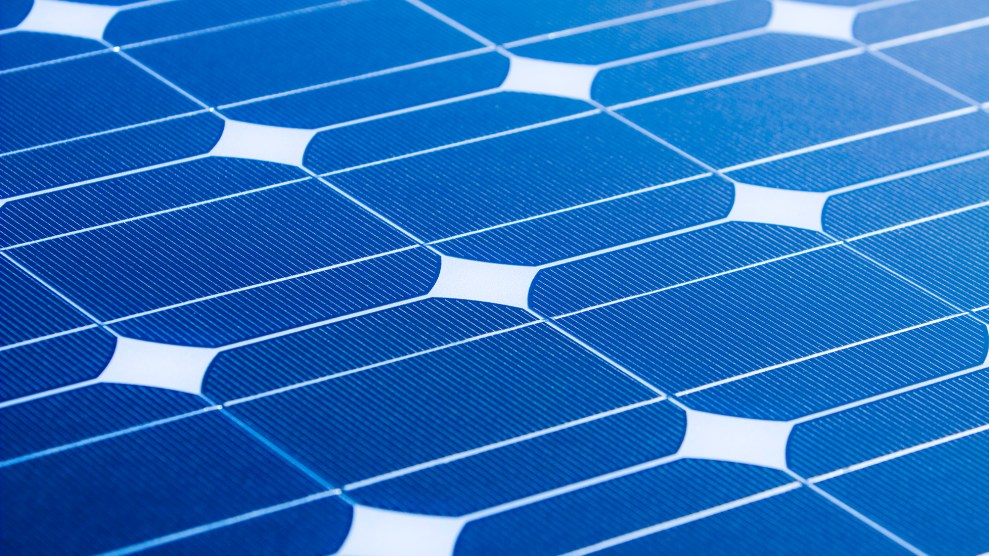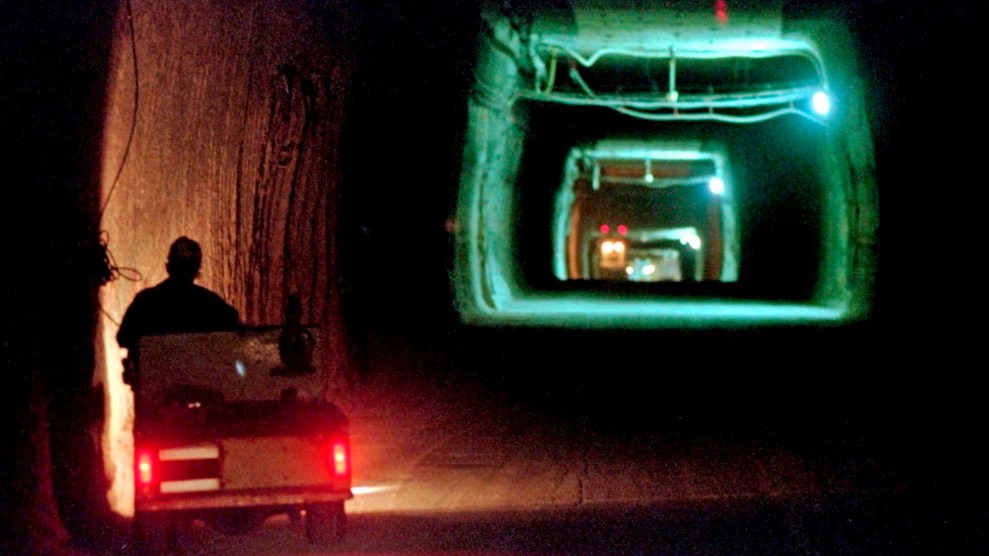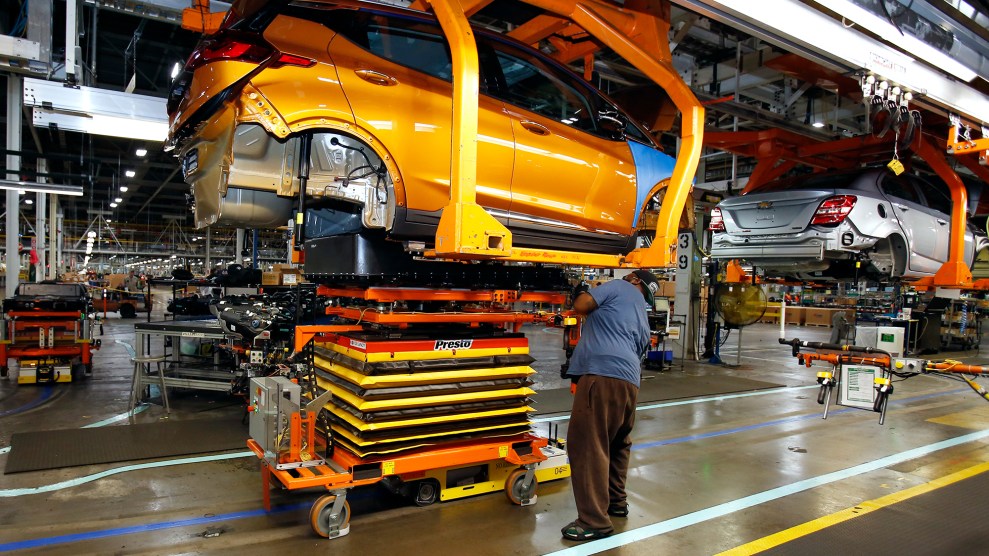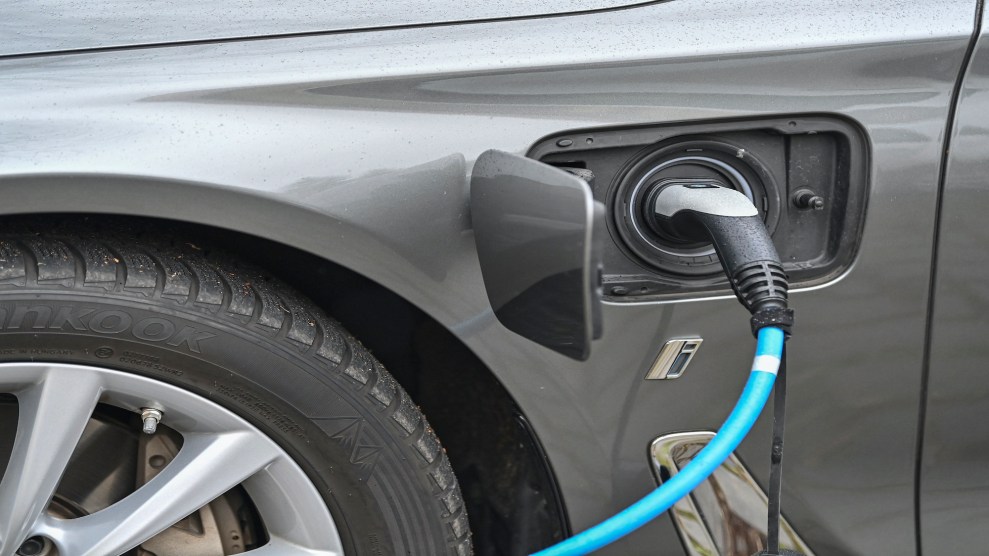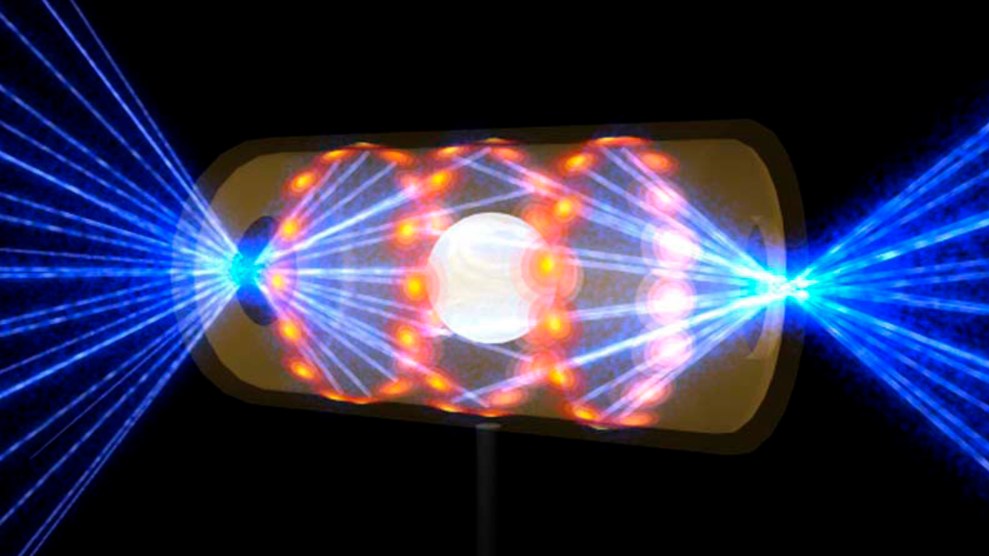
An hohlraum capsule is penetrated by lasers, which compress and heat the target material to induce nuclear fusion. The power needed to operate the lasers wasn't included in the calculation, however. Illustration courtesy of Lawrence Livermore National Laboratory via AP
This story and brief explainer were originally published by the Guardian and are reproduced here as part of the Climate Desk collaboration.
Researchers have reportedly made a breakthrough in the quest to unlock a “near-limitless, safe, clean” source of energy: They got more energy out of a nuclear fusion reaction than they put in.
Nuclear fusion involves smashing together light elements such as hydrogen to form heavier elements, releasing a huge burst of energy in the process. The approach, which gives rise to the heat and light of the sun and other stars, has been hailed as having huge potential as a sustainable, low-carbon energy source.
However, since nuclear fusion research began in the 1950s, researchers have been unable to a demonstrate a positive energy gain, a condition known as ignition. That was, it seems, until now.
According to a report in the Financial Times, which has yet to be confirmed by the National Ignition Facility at Lawrence Livermore National Laboratory in California that is behind the work, researchers have managed to release 2.5 megajoules (MJ) of energy after using just 2.1 MJ to heat the fuel with lasers.
Dr Robbie Scott, of the Science and Technology Facilities Council’s (STFC) Central Laser Facility (CLF) Plasma Physics Group, who contributed to this research, described the results as a “momentous achievement.”
“Fusion has the potential to provide a near-limitless, safe, clean, source of carbon-free baseload energy,” he said. “This seminal result from the National Ignition Facility is the first laboratory demonstration of fusion ‘energy-gain’—where more fusion energy is output than input by the laser beams. The scale of the breakthrough for laser fusion research cannot be overstated.
“The experiment demonstrates unambiguously that the physics of Laser Fusion works,” he added. “In order to transform NIF’s result into power production a lot of work remains, but this is a key step along the path.”
“It proves that the long sought-after goal, the ‘holy grail’ of fusion, can indeed be achieved.”
But experts have stressed that while the results would be an important proof of principle, the technology is a long way from being a mainstay of the energy landscape. To start with, 0.4 MJ is about 0.1 kilowatt-hour (kWh)—about enough energy to boil a kettle.
“To turn fusion into a power source we’ll need to boost the energy gain still further,” said Chittenden. “We’ll also need to find a way to reproduce the same effect much more frequently and much more cheaply before we can realistically turn this into a power plant.”
Prof Justin Wark, professor of physics at the University of Oxford, added that while, in principle, the Lawrence Livermore National Laboratory could produce such a result about once a day, a fusion power plant would need to do it 10 times a second.
And there is another point: The positive energy gain reported ignores the 500 MJ of energy that was put into the lasers themselves.
However, Chittenden stressed the NIF was designed for a scientific demonstration, not as a power plant. “The efficiency of converting electrical energy to laser energy was not a factor in its design,” he said.
“Anyone working in fusion would be quick to point out that there is still a long way to go from demonstrating energy gain to getting to wall-plug efficiency where the energy coming from a fusion reactor exceeds its electrical energy input required to run the reactor,” he added.
“The experiments on NIF demonstrate the scientific process of ignition and how this leads to high fusion energy gain, but to turn this into a power station we need to develop simpler methods to reach these conditions, which will need to be more efficient and above all cheaper in order for inertial fusion to be realized as a fusion power source.”
The latest results, if true, top the last big breakthrough by the facility which came just last year when it was announced that the team had hit 70 percent of the laser energy put in to the experiment released as nuclear energy.
Nuclear Fusion 101
What is it?
We experience nuclear fusion every day—it is the process that gives rise to the heat and light of the sun and other stars. In brief, it involves light atoms being smashed together to produce heavier ones, releasing vast amounts of energy in the process.
To do this ourselves takes some serious engineering. At the National Ignition Facility at Lawrence Livermore National Laboratory in California, a weak laser beam is split and the energy amplified to give 192 laser beams. These are used to heat the walls of a small gold can, called a hohlraum, to more than 3 million degrees Celsius, resulting in the emission of X-rays.
These X-rays heat a millimeter-sized capsule within the hohlraum that contains two forms of hydrogen: deuterium and tritium. The heat causes the surface of the capsule to explode outwards, forcing its contents to implode—in other words, the deuterium and tritium are forced together rapidly at very high pressure and temperature.
The upshot is that, in the hottest part of the fuel, fusion occurs, resulting in the formation of helium nuclei. As one helium nucleus has slightly less mass than the combination of one deuterium and one tritium nucleus, the difference in mass is released as a burst of energy. In the right conditions the helium nuclei produced in this process can transfer their kinetic energy to the remaining fuel, heating it up and triggering yet more fusion.
Should this happen, it becomes possible to release more energy than was put into the experiment by the lasers, a condition known as ignition.
What just happened?
Researchers at the NIF have announced that, for the first time, they have managed to do just that. The team used 2.05MJ of energy to heat the fuel with lasers, releasing 3.15MJ of energy.
Is that a lot?
No, not really. The difference—1.1MJ—is about 0.3kWh. It takes about 0.2kWh to boil a full kettle of water.
Then why is everyone so excited?
Nuclear fusion research has been going on for 70 years and this is the first time scientists have managed to demonstrate ignition—a positive energy gain. The results show that it is indeed possible to use laser fusion to generate energy—a crucial proof of principle that will spur on research to develop the technology. That matters because it is hoped nuclear fusion will eventually provide a near-limitless, safe and clean source of energy.
How far away are we from powering our homes with nuclear fusion?
Miles. And miles. Only a small amount of excess energy was generated in the latest experiments—and it took a lot of energy, around 500 MJ, to power the lasers in the first place. Such reactions would also need to happen at a much greater frequency—about 10 times a second—and be far cheaper to run before nuclear fusion could actually be used to power even a kettle.
Jeremy Chittenden, a professor of plasma physics at Imperial College London, told the Guardian: “Anyone working in fusion would be quick to point out that there is still a long way to go from demonstrating energy gain to getting to wall-plug efficiency where the energy coming from a fusion reactor exceeds its electrical energy input required to run the reactor.
“The experiments on NIF demonstrate the scientific process of ignition and how this leads to high fusion energy gain, but to turn this into a power station we need to develop simpler methods to reach these conditions, which will need to be more efficient and above all cheaper in order for inertial fusion to be realized as a fusion power source.”
